Slebech is a community in Pembrokeshire, situated on the northern shore of the Eastern River Cleddau. The community mainly consists of farmland and woodland and lies within the Pembrokeshire Coast National Park. The only sizeable settlement within the community is the hamlet of The Rhos. The community was centred around the Slebech Park Estate and also contains the magnificent Picton Castle, the ancestral home of the Wogan and Philipps family. In the Middle Ages Slebech belonged to the Knights Hospitallers of the Order of St John and the original church on the bank of the river was established in 1161. The more modern Slebech Church still stands today, on a different site, although it is in a sadly dilapidated state. It was built for Baron Rutzen of Slebech Park. Monuments brought from the old church are reportedly now in the county museum. I have no record of any of these monuments, of if there was a war memorial in the Church, so have created this web page, with details of all known casualties of both World Wars who had ties to the community.
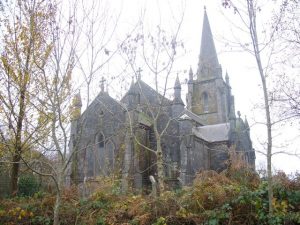
Slebech Victoria Cross Winner
The Hon. Augustus Henry Archibald Anson, VC, Captain, 84th Regiment (York & Lancaster Regiment). (Slebech). Augustus was born at Slebech Hall, Haverfordwest on 5 March 1835, the son of the 1st Earl of Lichfield, Thomas William Anson, and his wife Lady Louisa Barbara Catherine Anson (nee Philipps). He was serving as a captain in the 84th (later the York & Lancaster) Regiment when he performed the deeds for which he was awarded the Victoria Cross. His citation for his deeds read: “On 28th September 1857 at Bolandshahr, India, the 9th Light Dragoons had charged through the town and were reforming on the Serai, when the enemy tried to close the entrance by drawing their carts across it. Captain Anson, taking a lance, dashed out to the gate way up and knocked the drivers off their cop’s carts. Owing to wound in his left hand, he could not stop his horse and rode it into the middle of the enemy who fired on him. At Lucknow, on 16th November 1857 he again showed great gallantry when he entered with a storming party on the gates being burst open; his horse was killed, and he was slightly wounded.” Augustus later achieved the rank of Lieutenant-Colonel and was Member of Parliament for Lichfield then Bewdley. He passed away at the age of 42, on 17 November 1877, in Cannes, France, and was buried at Cimitiere Protestant du Grand Jus, Cannes. His medals are still held by the family.
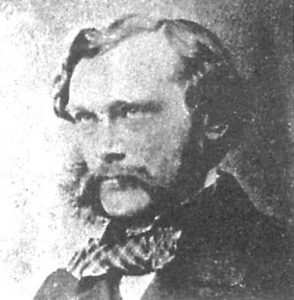
The Great War, 1914-1918
Harry Hickman Bromfield, DSO, Major, Welsh Guards. Harry was the son of Henry and Mary Elizabeth Bromfield, of Stratford-on-Avon. He married Ethel Philippa Philipps in 1906, the eldest daughter of Sir Charles and Lady Philipps of Picton Castle. Harry had served in the South African War as Captain in the South Wales Borderers and had gained the Distinguished Service Order in South Africa for his gallant leadership. He had become Chief Constable of Breconshire Constabulary prior to the war and volunteered to serve with the newly formed Welsh Guards in 1915, joining the battalion at Esher. The 1st Battalion, Welsh Guards was attached to 3rd Guards Brigade, Guards Division, which had been formed in France in August 1915. The various Guards units that had been with other Divisions were withdrawn to be brought together to create this fine formation. It remained on the Western Front throughout the war and saw its first major action during the Battle of Loos on 25 September 1915, remaining in the area during the coming months, where they also fought in the subsequent Action of Hohenzollern Redoubt. In July 1916 the Division moved to the Somme, and Harry joined it here, when he took command of Prince of Wales Company from Viscount Clive, who had been promoted. On 14 August the battalion was relieved by the 2nd Battalion Scots Guards, and went into a variety of rest-huts, ruins, and trenches round Colincamps. The Guards then moved back into the line, taking over from 48 Brigade a line along the outskirts of the wood at the end of Ginchy. The situation at the time was a mess. The Welsh Guards were facing the wrong way, as they did not know what had happened during the previous attack, and in the ensuing fighting, Harry was killed while leading his men gallantly on 10 September 1916, aged 47. He is commemorated on the Thiepval Memorial, France.
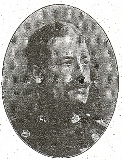
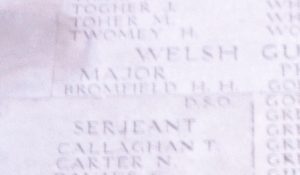
Baron Alan Frederick James de Rutzen, Lieutenant, Pembroke Yeomanry. Alan was born near Llangadog in 1876, the son of Sir Albert de Rutzen and Horatia Augusta Stepney de Rutzen. In 1908 he married Eleanor Etna Audley Thursby-Pelham, and the couple resided at Picton Castle and Glanmarlais Park. Alan joined the Pembroke Yeomanry at the outbreak of war and entrained with the Yeomanry for Norfolk, where it spent the coming months on garrison duties around the coast. Alan succeeded to the Slebech Estate following the death of his uncle in April 1915. During March 1916 the 1/1st Pembroke Yeomanry moved to Egypt, where it merged with the Welsh Border Mounted Brigade and formed the 4th Dismounted Brigade. soon after his arrival in Egypt, Alan volunteered to serve with the Imperial Camel Corps, which had initially been formed as a raiding force, to counter the threat of hostile Senussi Tribesmen. Alan led the 6th Company, Imperial Camel Corps. He was instantly killed when he was shot in the head during an engagement against the Turks near Katia on 7 August 1916, aged 40. Alan was buried in Kantara War Memorial Cemetery, Egypt. A memorial service for him was held in Slebech Church in September 1916, with the Church being so full that many people had to stand outside. The Church had been built by his grandfather. His only son, Alan, was killed during World War Two.
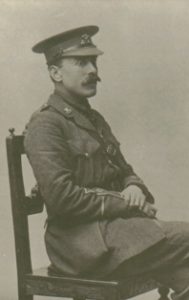
Paul Granat, Labourer, Forestry Corps. Paul was born in 1887. He was among a large number of foreign workers, mainly from the Baltic states, who had joined the Forestry Corps and was sent to the Slebech Timber Camp. Paul died at Slebech Camp on 21 November 1918, during the great influenza pandemic. The 31-year-old was buried in St. John the Baptist Churchyard at Slebech on 24 November 1918.
John Harries, Private, 203540, Welsh Regiment. John was born in 1885, the son of James Harries and Martha Harries, of Slate House, Slebech. He moved to Haverfordwest to work as a baker and resided at 5, Lower March, Haverfordwest prior to the war. In 1916 John married Gladys Picton. The couple had two daughters, Gwendoline, born soon after their marriage, and Gladys, born in 1917. John enlisted at Haverfordwest into the 4th (Reserve) Battalion, Welsh Regiment, and after completing his training was drafted to France in the winter of 1917, joining the 9th Battalion, which was attached to 58 Brigade, 19th (Western) Division. John probably joined the battalion following its actions during the Passchendaele offensive of 1917. The Division wintered in the Cambrai sector, following the closure of the Battle of Cambrai, and was holding a section of the line in the Flesquières Salient. On 21 March 1918 the Germans launched the first of three offensives on to the section of the front running from Flesquières to St. Quentin, and the 19th Division was thrown into desperate fighting as it was pushed back over the coming days. The battered Division was then moved to the Messines sector to rest, but on 11 April became caught up in the second phase of the German offensive, which had been launched along the Lys Valley on 9 April, and again became caught up in desperate fighting. John had been wounded in the head during the fighting on the Lys in April and was evacuated back to England for treatment at Queen’s Hospital, Sidcup. He died of his wounds there on 6 August 1918, aged 31. His remains were brought home and he was buried in St. Thomas A Becket Churchyard, Haverfordwest. His widow, Gladys, married a sailor named John William Tyler in the summer of 1919. He was unfortunately drowned at Pembroke Dock as a result of an argument whilst being ferried to his ship, the RFA Francol, on 27 December 1919.
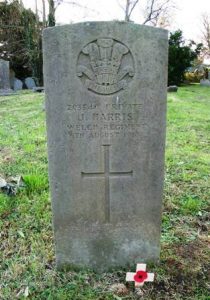
Walter Selwyn Orpen, Second Lieutenant, Lancashire Fusiliers. Walter was born on 20 July 1893, the youngest son of Reverend Thomas Herbert Orpen and Mrs. Amy Octavia Gwyther Orpen, the sister of Lady Philipps of Picton Castle, and of 5, Herschel Road, Cambridge. He was educated at Malvern, and at Selwyn College, Cambridge where he had completed his second year when war was declared. He was then in the OTC and was gazetted to the North Staffordshire Regiment in September 1914, before being posted to the 2nd Battalion, Lancashire Fusiliers. He was then posted to the 10th Battalion, which was attached to 52 Brigade, 17th (Northern) Division. Walter landed with the battalion at Boulogne on 15 July 1915. They spent their initial period of trench familiarisation and then holding the front lines in the southern area of the Ypres salient. Here they took part in fighting at the Bluff during February 1916 before moving south, where they fought at the Battle of Albert, where the Division captured Fricourt at heavy cost during the opening of the Somme Offensive. Walter was killed here by a sniper on 6 July 1916. He was 22 years old, and is commemorated on the Thiepval Memorial, France. His Adjutant wrote, “During the time he has been with us I grew to like him more and more and to respect his many good qualities. He was always cheerful and brave.” Walter is also commemorated on the War Memorial at St. James Church, Abinger, the Cambridge (St. Giles) War Memorial, the Forest Green War Memorial, and the War Memorial in the Knoll School, Aspley Heath, Beds.
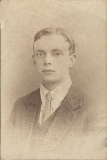
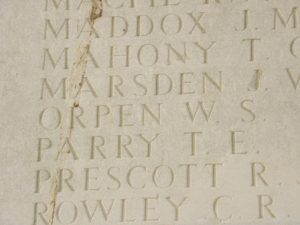
Edward Renowsky, Labourer, Forestry Corps. Edward was born in Riga, Latvia in 1886. He had left home to go to sea as a young man and had seen active service in the Mediterranean when his ship took part in an epic six-hour fight to fend off a German submarine before being torpedoed and sunk. Edward was rescued from the sea and returned to duty aboard another Merchant vessel, but in 1916 fell 36 feet into a hold and fractured his skull. He was hospitalised in Britain and after recovering volunteered to work for the Forestry Corps, being sent to the Slebech Timber Camp. Edward was well known locally as a gentle giant and was a hard worker, but in the summer of 1918 took ill and was taken to the County Hospital at Haverfordwest. He died there of influenza on 1 August 1918. The Latvian was buried in St. John the Baptist Churchyard at Slebech on Sunday 4 August 1918.
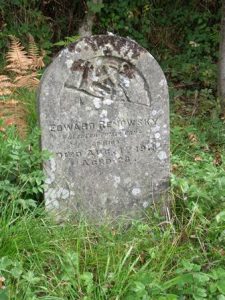
World War Two, 1939-1945
John Michael Bracher, Leading Aircraftman, 552258, Royal Air Force. John was the son of Harold Edward Bracher and Helen Charlotte Bracher (nee Vick), of Rhos, Slebech. John enlisted into the Royal Air Force and was posted to No. 2 Air Observers School for training. On 17 October 1941, John was flying aboard an Avro Anson I, Serial L9148, when it crashed into the sea off Fishguard, killing John and fellow Aircraftman Thomas Xavier Bradbury. John’s body was recovered from the sea, and the 20-year-old was buried in Slebech (St. John The Baptist) Churchyard on 21 October. His comrade’s body was never recovered.
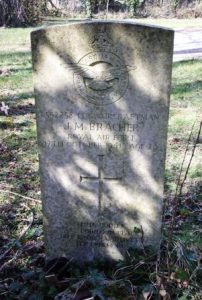
Vernon Coleman, Steward, Merchant Navy. Vernon was born in Merthyr Tydfil on 12 January 1917, the son of Bernard Coleman and Edith Jane Coleman (nee Hicks). His father was a gardener and the family then moved to Llanelli for a short while before moving to Slebech Park Gardens, where Bernard ran his own market garden. Vernon had enlisted into the Merchant Navy at Newport on 10 March 1933 and served as a Deck Boy. In 1941 he was posted aboard the newly launched oil tanker, SS Empire Amethyst with the rank of Steward. The tanker had been built for the Ministry of War Transport and operated under the management of the Hadley Shipping Co Ltd, Middlesbrough, taking part in several convoys over the months following her launching. In mid-April 1942, Empire Amethyst left New Orleans bound for Freetown carrying a cargo of 12,000 tons of motor spirit. Her intended route took her via the Lesser Antilles and then across the Atlantic to Freetown. The tanker was spotted by the crew of U-154 on 12 April 1942 but was not attacked as the submarine’s Captain thought she was under escort. During the early hours of 13 April 1942, Empire Amethyst received a distress call from the American SS Delvalla which had been torpedoed by U-154 and was sinking. The Germans spotted Empire Amethyst again and surfaced to attack the helpless tanker with her deck-gun, pursuing her throughout the night. At around 05.50 on the following morning, 14 Aril 1942, the Germans spotted Empire Amethyst again before launching two torpedoes at her. One torpedo struck the tanker under her bridge, and she exploded before sinking in a sheet of flames, with the loss of 47 lives. Vernon was 26 years old when he was killed that day. He has no known grave and is commemorated alongside his fellow crewmen on the Tower Hill Memorial, London.
Baron John Frederick Foley de Rutzen, Major, 72466, Welsh Guards. John was the only son of Baron Alan Frederick James de Rutzen, and Baroness Eleanor Etna Audley de Rutzen, of Ridgeway, Pembrokeshire. He succeeded to the Slebech Estate following the death of his father in Egypt in 1916. John married Sheila Victoria Katrin Philipps prior to the war, and the couple resided at Picton Castle. John was commissioned into the Welsh Guards, becoming a Major with the 3rd Battalion, Welsh Guards. The battalion was an armoured unit and fought in the North African campaign before taking part in the invasions of Sicily and Italy. Alan was mortally wounded whilst leading a platoon on the Bataglia Ridge, and died on 11 October 1944, aged 36. He is buried at Santerno Valley War Cemetery, Italy.
Ernest Ivor Hughes, Serjeant, 915869, Royal Artillery. Ernest was the son of John Hughes and Sarah Rebecca Hughes (nee Killa), of Templeton. He served with 102 (The Pembroke Yeomanry) Field Regiment, Royal Artillery, which landed at Algiers in February 1943 as part of the 1st Army. After the fall of Tunis, they converted to a medium artillery regiment and landed in Italy with the 8th Army, in December 1943. Ernest was killed soon after, on 22 January 1944. He was 25 years old, and is buried at Minturno War Cemetery, Italy, in Grave Ref. II, F, 13. Ernest is also commemorated on his parent’s grave at Slebech.
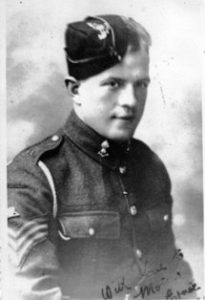
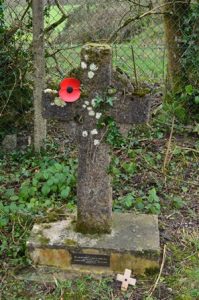
Gladys Maud Jenkins, Civilian. Gladys was the daughter of Thomas Edward Jenkins and Jane Jenkins (nee Mitchell), of 32, Bridge Street, Haverfordwest. Gladys worked for the Post Office at Haverfordwest for many years, before moving to Bristol to work for the Post Office soon after the outbreak of war. She was lodging with eight other female Post Office workers at 15, Berkeley Square, Bristol, and was killed there when Bristol was attacked by German bombers on 3 January 1941, at the height of the Bristol Blitz. The remains of the 45-year-old were recovered and brought home for burial in St. John the Baptist Churchyard, Slebech.
They also Served – World War 1
A number of men from the Parish of Slebech served during the Great War and survived the terrible conflict. Among them were:
John Thomas Barnes, Driver, 725743, Royal Field Artillery. Of Slebech Cottage.
James Cole, Sapper, 121290, Labour Corps. Of Ferry Cottage, Picton Castle.
Thomas John Davies, Private, 203317, 564th Agricultural Company, Labour Corps. Of Slebech Lodge.
Joseph Edwards, Private, 28949, South Wales Borderers. Of Picton Castle.
John Arthur Griffiths, Bombardier, 1933, 122nd Brigade, Royal Field Artillery. Of Arnold’s Hill.
Hubert Lawrence Harries, Lance Corporal, 260358, 12th Battalion, Gloucestershire Regiment. Of The Rhos, Picton Castle.
James Harries, Sapper, 28459, 139th A.T.C., Royal Engineers. Of Deer Park, Picton Castle.
Joseph Francis Hazell, Private, 201578, Welsh Regiment. Of Picton Castle.
Charles Howells, Able Seaman, 206091, Royal Navy. Of Slebech.
Edgar Henry Lewis, Sergeant, 49700, 1/2nd Battalion, Monmouthshire Regiment. Of Ladies Cross, Rhos.
James Lewis, Gunner, 370049, 261st Brigade, Royal Garrison Artillery. Of Picton Castle.
William Charles Lewis, Gunner, 165398, 76th Siege Battery, Royal Garrison Artillery. Of Church Cottages, Rhos.
Andrew Macpherson, Gunner, 93177, 121st Siege Battery, Royal Garrison Artillery. Of Prickett’s Gate, Slebech.
Edward John Moore, Private, 241119, 1/5th Battalion, Devonshire Regiment. Of Picton Lodge, Rhos.
Thomas Lloyd Moore, Gunner, 121699, Royal Garrison Artillery. Of Picton Cottage, Rhos.
Henry Morley, Warrant Officer II, 28465, Royal Engineers. Of Slebech.
James Morris, Private, 138735, Royal Welsh Fusiliers. Of Slebech.
William George Owen, Colour Sergeant, 51283, 26th Battalion, Middlesex Regiment. Of The Rhos, Picton.
Thomas Henry Roberts, Private, 316080, Cheshire Regiment. Of The Gardens, Slebech Park.
William Thomas Snead, Private, M2/177896, 689th M.S. Company, Army Service Corps. Of The Rhos,
Henry John Petty, Colour Sergeant, H/50574, Imperial Camel Corps. Of Westend, South Dairy.
James Charles Williams, Petty Officer, 157133, HMS Idaho, Royal Navy. Of The Rhos.